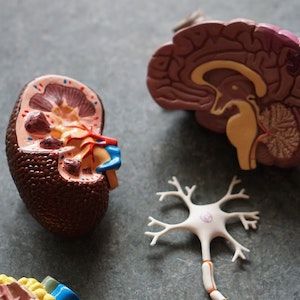Article
Identifying Distinct Cognitive Profiles Of Adults With SCD May Reduce Morbidity
Author(s):
Data show patients with sickle cell disease identified by distinct cognitive profile should have neurorehabilitation tailored to each unique profile.

Although there is infrequency in published literature on cognitive functioning in adults with sickle cell disease (SCD) when compared to children, previous reports have described deficits in processing speed and exclusive functions, with potentially more severe deficits in patients with silent cerebral infarcts (SCI).
Led by Maryline Couette, PhD, Sickle Cell Referral Center, UMGGR, a team of investigators aimed to describe the neuropsychological profiles of adults with SCD, as well as to characterize clusters of patients with similar cognitive profiles.
From their findings, they observed the identification of distinct cognitive profiles and neurorehabilitation tailored to each unique patient profile may reduce the long-term cognitive morbidity of SCD.
The study was presented at the 2021 American Society of Hematology (ASH) Annual Meeting & Exposition.
Methods
Couette and colleagues performed a retrospective analysis of all consecutive adults with SCD who underwent comprehensive neuropsychological assessment during routine care at the UMGRR clinic at Henri Mondor Hospital in France between January 2017 - April 2021.
They utilized the Montreal Cognitive Assessment (MoCA) and Hospital Anxiety and Depression Scale (HADS) for cognitive disorder, anxiety, and depression screening. It was noted that the cognitive battery combined standardized neuropsychological tests, with established clinical utility and validity.
Additionally, educational attainment was scored based on the number of years of schooling for the highest completed diploma. They performed principal component analysis and used ANOVA to compare patients’ characteristics between clusters.
Their hypothesis relayed that in adults with SCD, cognitive profile varies with the presence of ischemic injury, including SCI or overt stroke.
Findings
The study included a total of 80 patients, with a median age of 36.5 years (19 - 63), with half being male (n = 40). Further, data show the genotype distribution was 62 patients (77.5%) with SS/Sbeta0, 12 (15.0%) with SC, and 6 (7.5%) with Sbeta+.
Through Principal Component Analysis, investigators determined a 5-factor model was the best fit (Bartlett’s sphericity test; x2(171) = 1174; P = .001), which explained 71.8% of the variance in neuropsychological scores.
Of that model, the first factor encompassed tests specifically assessing visual attention and visual organization (right hemisphere) and the second factor included tests for mental/cognitive control (frontal lobe). It was followed by the third factor testing selective inhibition/attention (fronto-parietal), the fourth factor testing for language/memory (left temporal lobe), and the fifth factor testing for shifting skill (sub-cortical loop).
Then, through hierarchical classification, 3 different clusters were observed, with 32 patients in cluster 1, 32 in cluster 2, and 16 in cluster 3.
Data show cluster 1 had a lower mean educational level (F (2,77) = 15,65; P <.001) and the lowest mean MoCA score (20.0/30), relative to cluster 2 (24.6; P <.001) and cluster 3 (26.4; P <.001).
Further, investigators observed patients in cluster 1 showed deficits on all 5 factors. Patients in cluster 2 compared to cluster 3 altered 4 factors (factors 1 - 4), at a lesser extent than cluster 1.
Additionally, there was a trend for the presence of more cerebral vasculopathy in cluster 1 (chi2, P = .06). The processing speed was slower and some frontal-executive deficits were present in cluster 2, compared to cluster 3.
In terms of stroke, 70% occurred during childhood in cluster 1, while 70% occurred during adulthood in cluster 2, and 100% during adulthood in cluster 3.
Couette and team noted that these results suggest ≥3 cognitive profiles in adults with SCD. The profiles included few or no cognitive deficits (cluster 3), some cognitive impairment with a subcortical cognitive profile (cluster 2 and 3, and more global cognitive impairment with cortical/subcortical profile and specific deficits of memory, language, and constructional praxis.
Takeaways
Overall, in order to reduce the long-term cognitive morbidity of SCD, patients can be identified by their distinct cognitive profiles and neurorehabilitation tailored to their unique profiles.
“The large proportion of childhood stroke in patients with global cognitive impairment in contrast with the majority of those with milder to no cognitive impairment having had their stroke in adulthood emphasize the crucial importance of preventing early childhood stroke and implementing early neurorehabilitation,” investigators wrote.
The study, “Cognitive Profile of Adults with Sickle Cell Disease - Cluster Analysis,” was published online by ASH.




